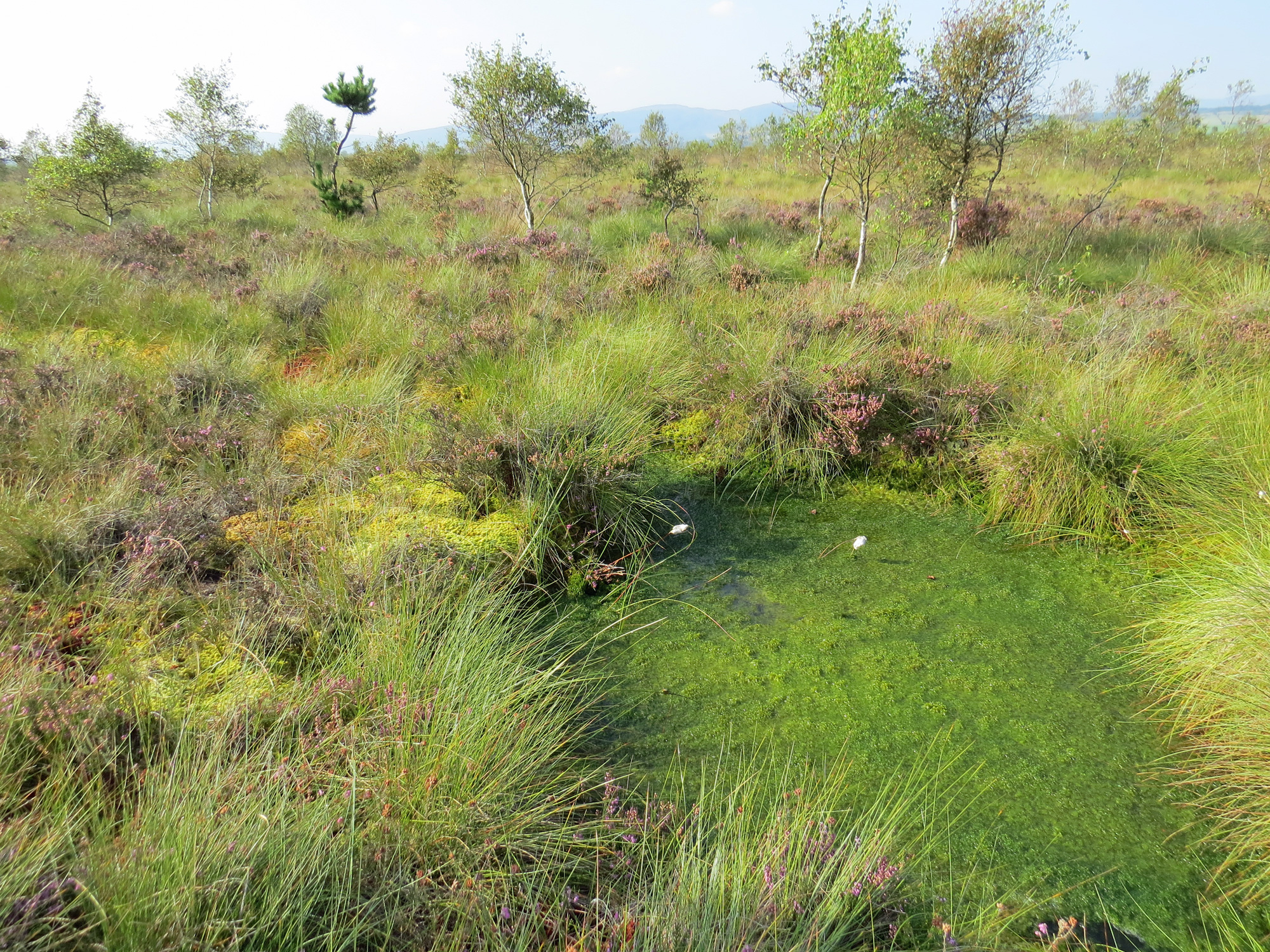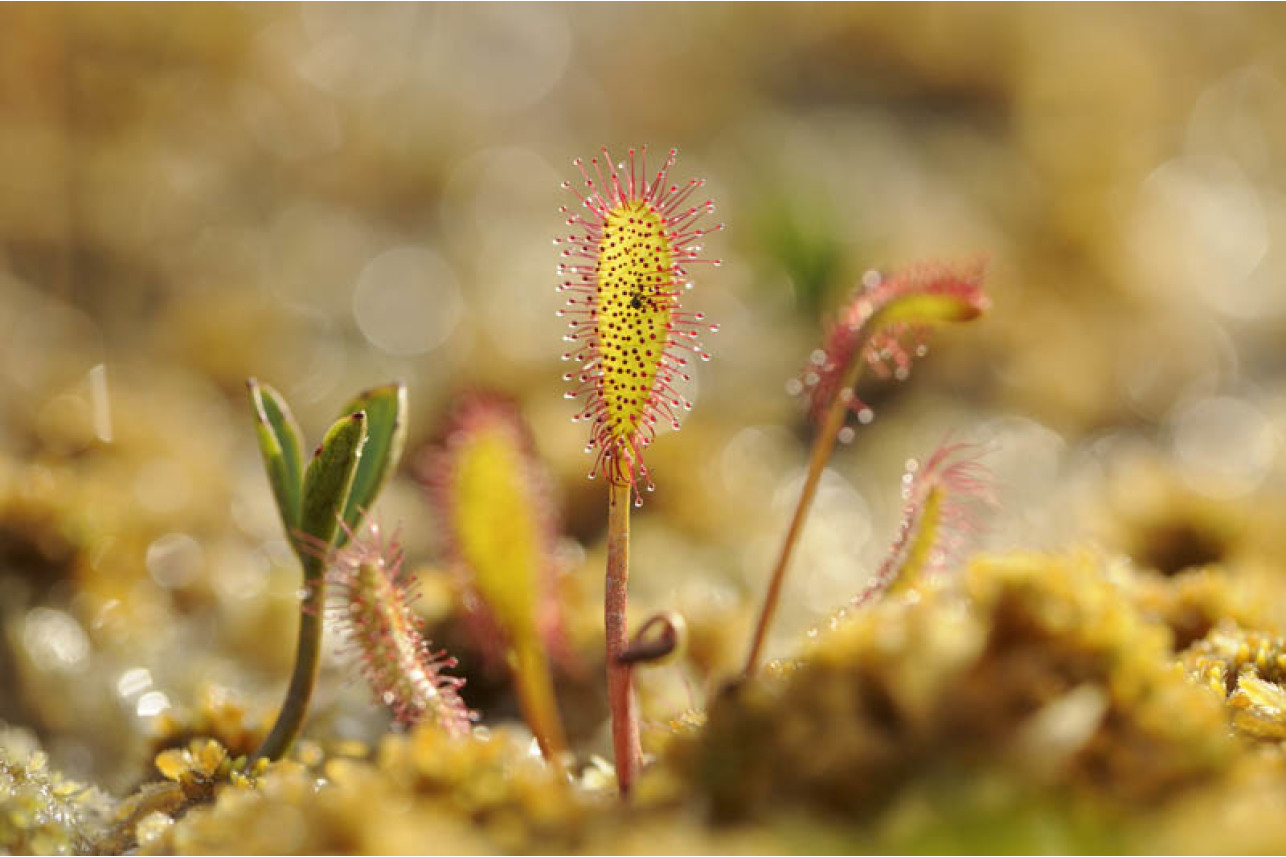Field notes: Avoid the bright patches
To introduce our celebration of peatlands, keen hill walker Susan Wright asks experts Clifton Bain, Paul Webster and Romany Garnett for their top tips on getting the best out of a bog.

If you’re a keen hill walker there’s a good chance that coming across a peat bog en route gives you a sinking feeling before you’re even up to your ankle or waist in soggy moss. These treeless expanses, exposed to the elements, can be tricky (and dangerous) to navigate and often leave little love lost for the bog.
“The problem for peatlands is that most people have only ever seen damaged and degraded bogs,” says Clifton. “Draining, cutting and burning has taken place over thousands of years, altering peatlands over a massive area. Most of us don’t know what a peatland should be.”
Bare, dried-out peat that has eroded into difficult-to-navigate lumps and gullies, exhibiting a lack of plant life or a widespread dominance of heather indicate a damaged, unhealthy peatland. A rich carpet of red and green sphagnum mosses and swaying seas of cottongrass populated by dragonflies, wading birds, foraging animals, networks of fungi and alive with the aroma of bog myrtle and other plants – that’s more of what a peat bog should be.
So how should we approach peat bogs on our hill walks? We asked three expert bog navigators for their opinions.
What’s great about visiting a peat bog?
Paul Webster, founder Walkhighlands: “Many of my early experiences in nature were bog–trotting and learning to navigate on the amazing plateau of eroded peat that is Kinder Scout on the Pennine Way. It felt like a true wilderness to me back then, a magical experience clambering in a vast maze of spectacular groughs. Bringing things up to date, the first covid lockdown was a tough time for everyone but I remember being uplifted by the spectacular displays of bog cotton around at that time near home in the Cairngorms. The most I've ever seen, I think.”
Clifton Bain, author: “We’re living at a time where the pace of change is phenomenal. Nature does change but at a pace we can handle. When you go on a peat bog you know it’s been there for 10,000 years, changing slowly. You can breathe, it’s not cluttered. Also, wildlife on bogs is not a big group to learn and identify. There are only about 20 types of sphagnum mosses and a dozen dragonflies. You can actually get to know them.”
Romany Garnett, Quinag Conservation Officer: “Peatlands are important areas for breeding waders, some of which are rare and declining. Dunlin, curlew, golden plover, greenshank all love these habitats. In the spring it is a magical concoction of bird song. Dragonflies emerge from their nymph-like state, and lizards and newts scuttle through cross-leaved heath and sedges. They are truly amazing places. And they breathe! Scientists have found, from satellite imagery, that bogs actually breathe. They have a mechanism that allows them to expand and contract according to water availability which gives bogs an amazing resilience in times of drought.”
What are your top tips for navigating a bog out on the hills?
PW: “By far the best tip is to do particularly boggy walks after a long dry spell of weather. Beyond that, it's really a game of looking for spots that will be able to support your weight and moving quickly on the worst bits. You learn this by experience. I have seen people getting completely stuck once or twice. You don't want to become a well–preserved specimen for future anthropologists! Avoid the patches of bright sphagnum moss.”
CB: “Myself and various important people have gone up to their arm pits in peat bogs. The most dangerous are the damaged ones. It’s tricky but try to stick to steep contours where the bog is shallower, and use plant communities to guide you. Plants grow in the wetter parts. And use walkways or established paths where you can. Human footprints break the lattice layer of sphagnum moss, which can damage the bog and cause erosion.”
RG: “Don’t walk on sphagnum moss. It looks deceptively shallow. I once had a school group out and a girl stepped into a seemingly shallow bog and went up to her armpits. And don’t walk in peatlands after heavy rain. Wait till there has been a dry spell.”
Find out more
- Paul Webster is a founder of walking website Walkhighlands and inventor of the 'Bog Factor' rating that’s included in Walkhighland’s walk reviews (read a longer version of our chat with Paul about the bog factor).
- Clifton Bain is author of The Peatlands of Britain and Ireland. Read more from him in For the love of bog.
- Romany Garnett is the John Muir Trust’s conservation officer at Quinag.
- Read more bog-related articles in our special celebration section - All about peatlands and find out how you can take action to help us care for them.
Photo at the top shows National Nature Reserve Flanders Moss - a huge expanse of raised bog habitat in Scotland's central belt.


